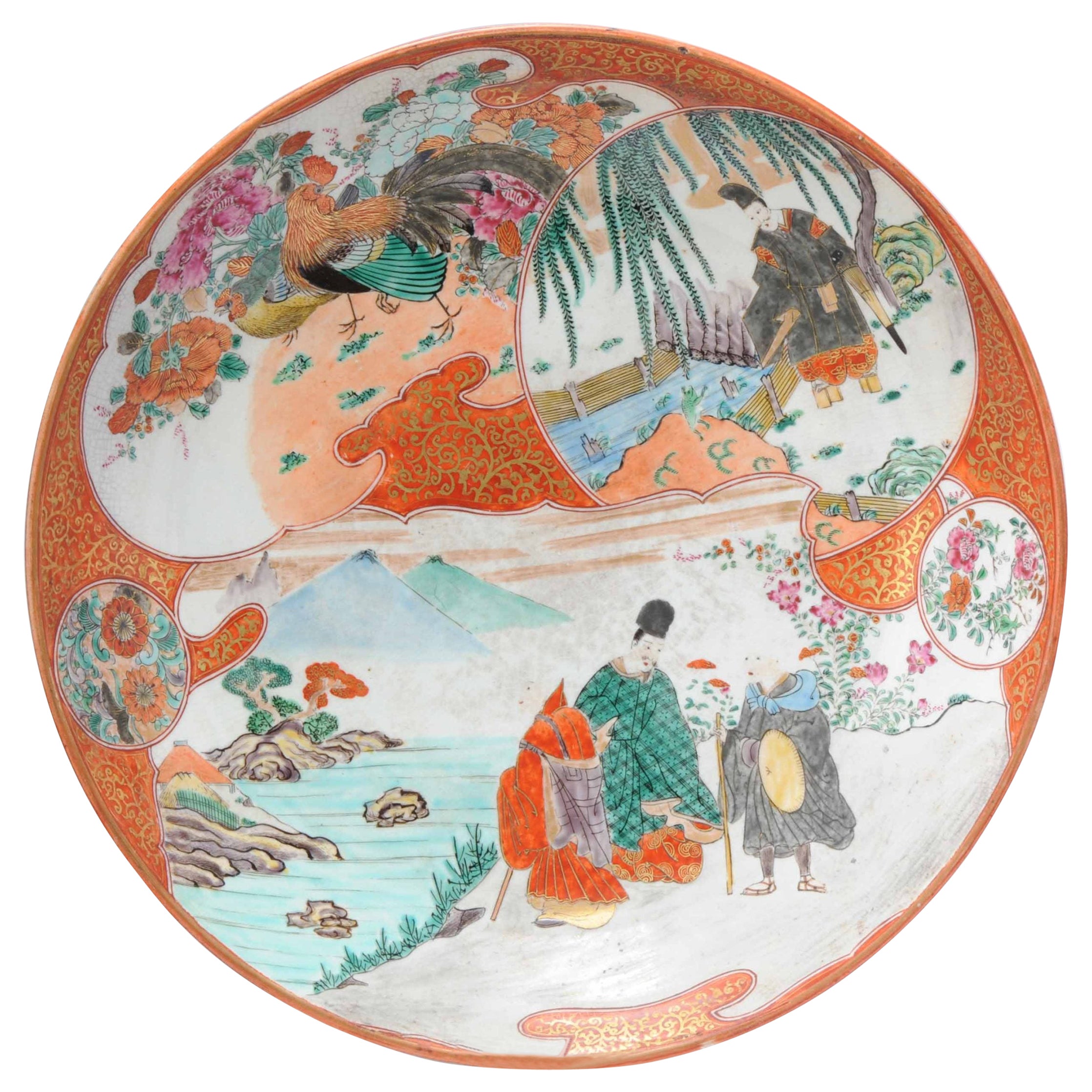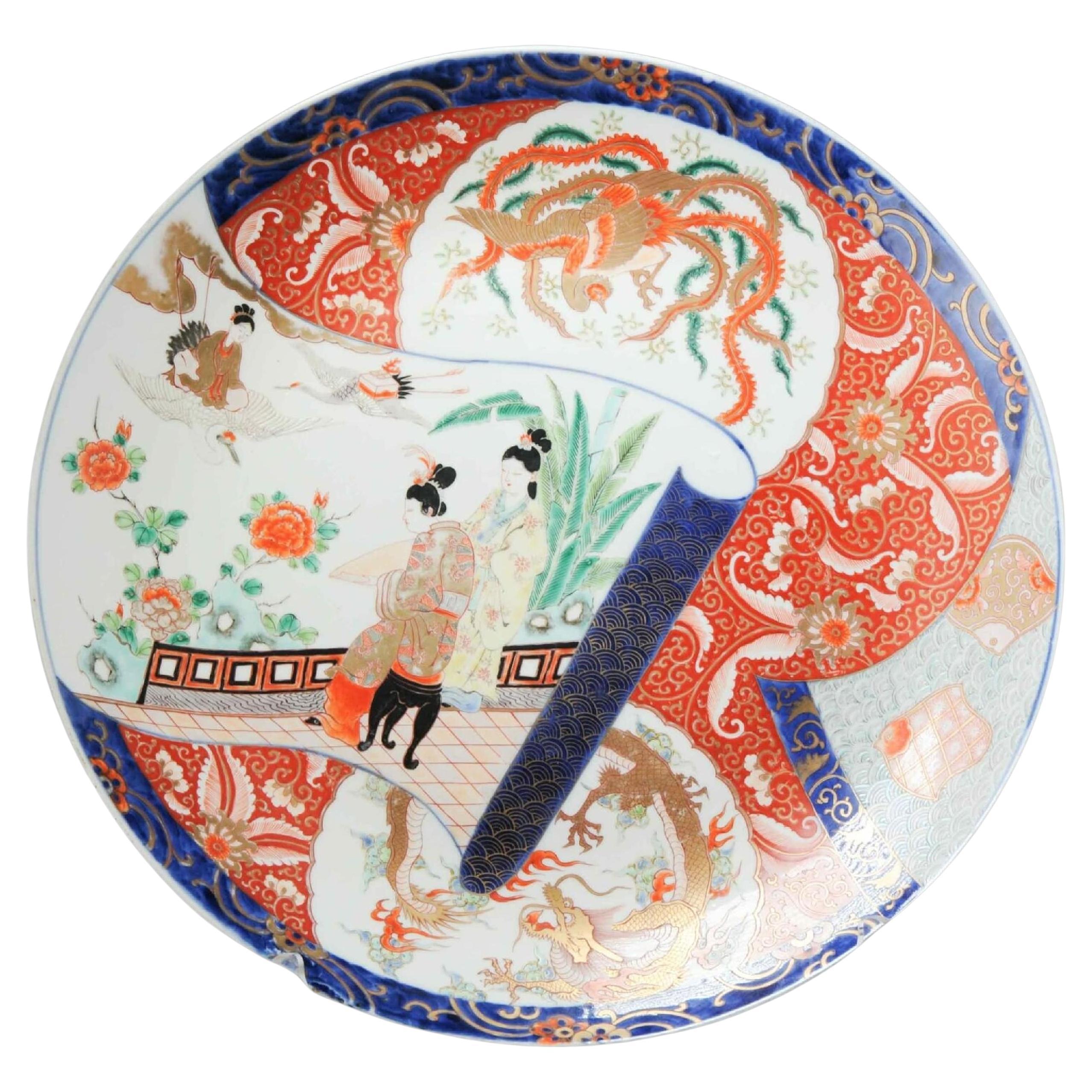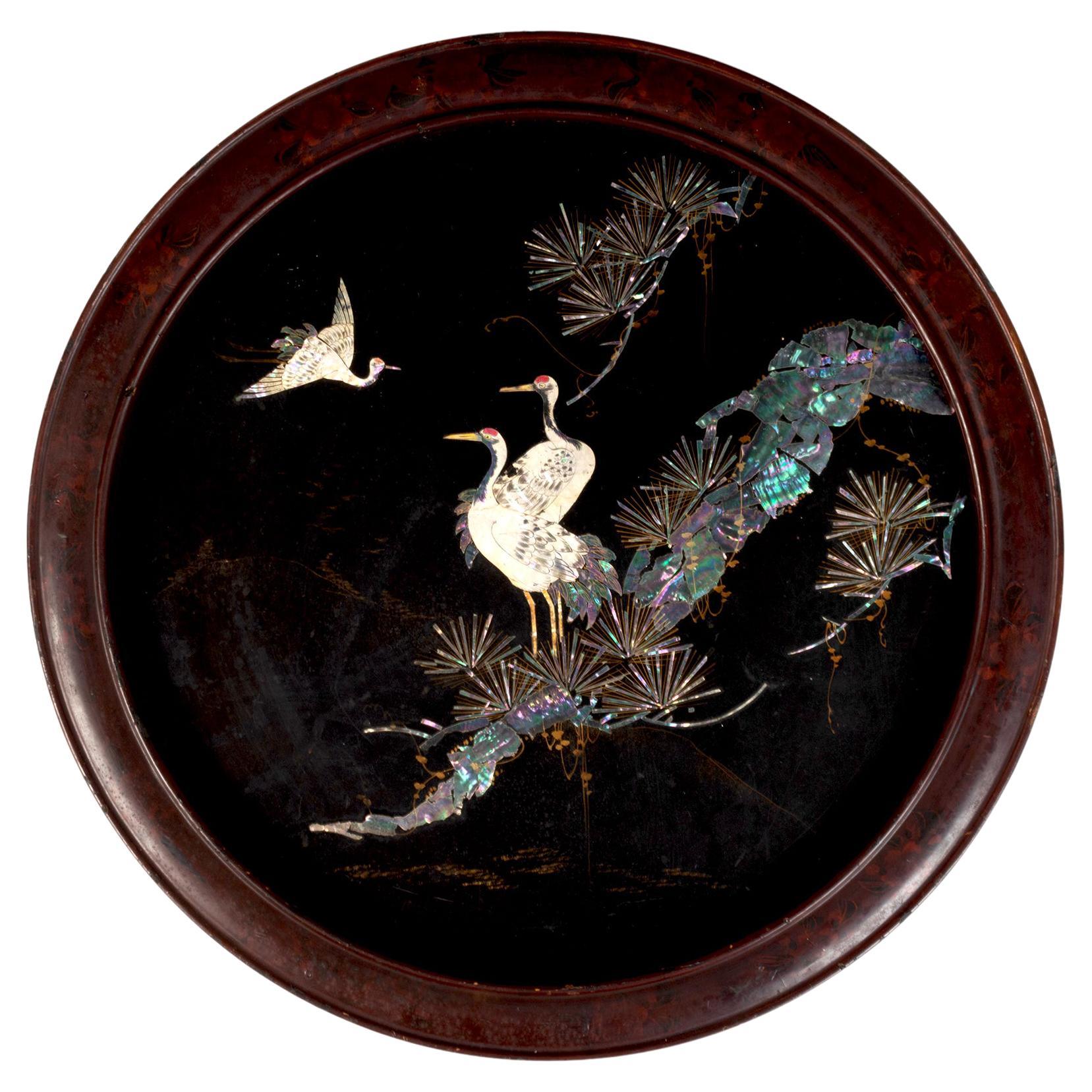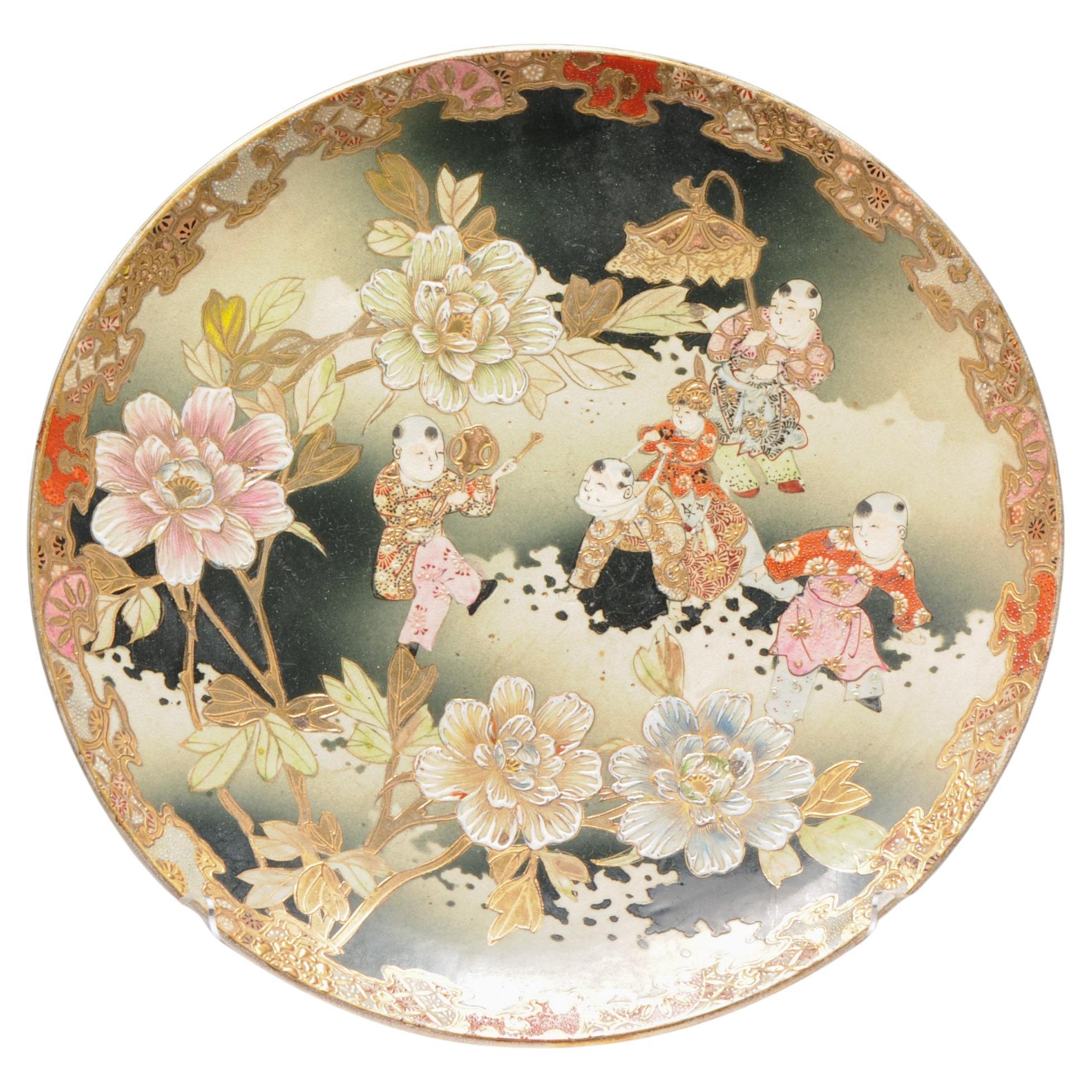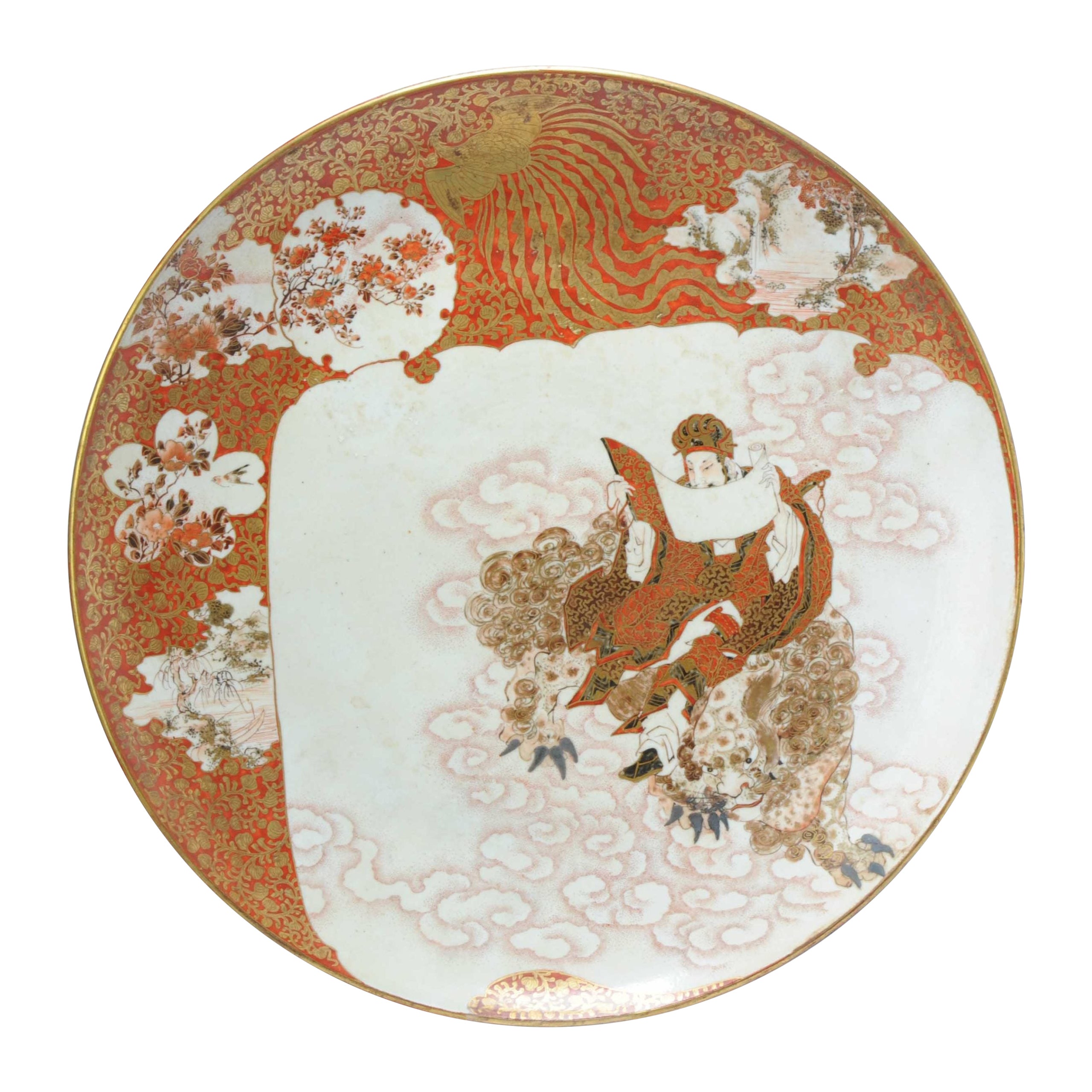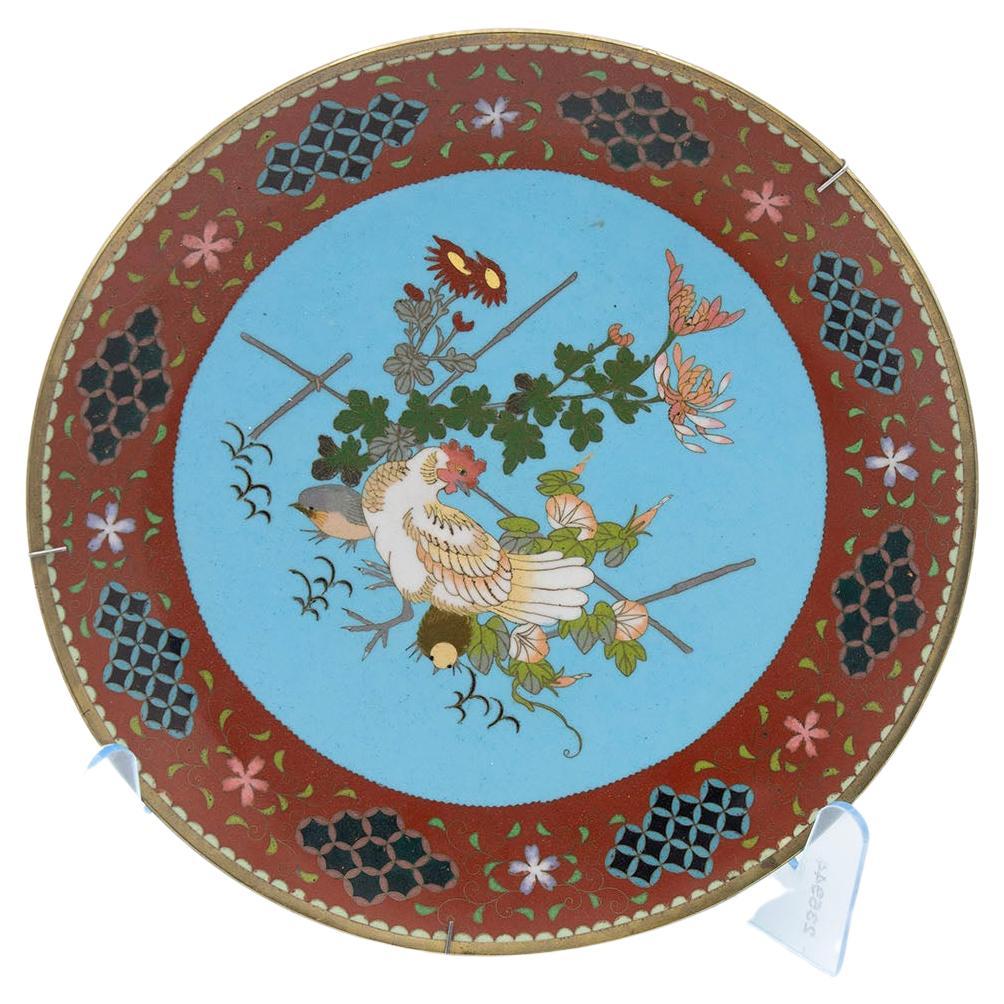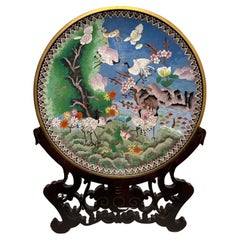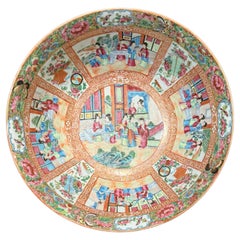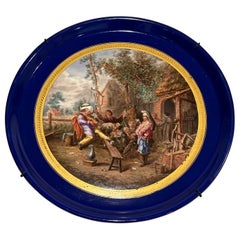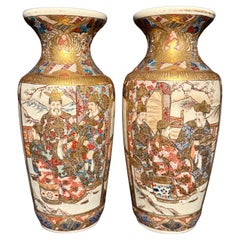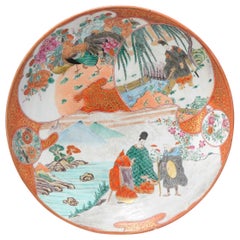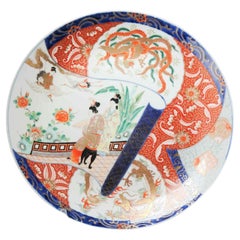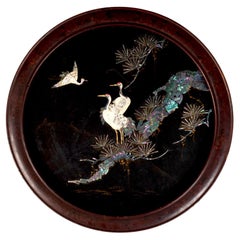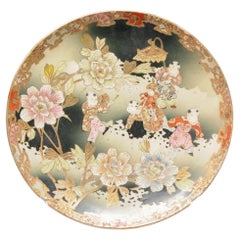Items Similar to Japanese Meiji Period Shibayama Charger Featuring Cockerel
Want more images or videos?
Request additional images or videos from the seller
1 of 8
Japanese Meiji Period Shibayama Charger Featuring Cockerel
$975
£739.81
€845.90
CA$1,361.81
A$1,514.15
CHF 790.60
MX$18,430.87
NOK 10,087.77
SEK 9,451.76
DKK 6,313.14
Shipping
Retrieving quote...The 1stDibs Promise:
Authenticity Guarantee,
Money-Back Guarantee,
24-Hour Cancellation
About the Item
19th century Meiji period charger/plate with cockerel beautifully realistic in layers of carved shell, mother of pearl and bone to stand in high relief against the black lacquered ground. Presented in the original red lacquered round frame also painted with cherry blossom. Good condition with only minor wear.
- Dimensions:Height: 4 in (10.16 cm)Diameter: 18 in (45.72 cm)
- Style:Japonisme (Of the Period)
- Materials and Techniques:
- Place of Origin:
- Period:
- Date of Manufacture:1880
- Condition:Wear consistent with age and use. Beautiful estate condition. Minor rub to black background. Minor los to red lacquer around rim.
- Seller Location:Norwood, NJ
- Reference Number:1stDibs: LU5080221679162
About the Seller
5.0
Platinum Seller
Premium sellers with a 4.7+ rating and 24-hour response times
Established in 1989
1stDibs seller since 2019
210 sales on 1stDibs
Typical response time: 1 hour
- ShippingRetrieving quote...Shipping from: Norwood, NJ
- Return Policy
Authenticity Guarantee
In the unlikely event there’s an issue with an item’s authenticity, contact us within 1 year for a full refund. DetailsMoney-Back Guarantee
If your item is not as described, is damaged in transit, or does not arrive, contact us within 7 days for a full refund. Details24-Hour Cancellation
You have a 24-hour grace period in which to reconsider your purchase, with no questions asked.Vetted Professional Sellers
Our world-class sellers must adhere to strict standards for service and quality, maintaining the integrity of our listings.Price-Match Guarantee
If you find that a seller listed the same item for a lower price elsewhere, we’ll match it.Trusted Global Delivery
Our best-in-class carrier network provides specialized shipping options worldwide, including custom delivery.More From This Seller
View AllLarge Chinese Enamel Bronze Cloisonne Charger
Located in Norwood, NJ
Large Chinese enamel bronze cloisonne charger. Unusual and rare bronze Chinese Cloisonne charger. The brightly multicolored enamel decoration feature...
Category
Late 20th Century Chinese Metalwork
Materials
Bronze, Enamel
Antique Qing Chinese Famille Rose Canton Porcelain Bowl
Located in Norwood, NJ
Antique Qing Chinese Export Famille Rose Canton Porcelain Punch Bowl with multiple painted panels. The exterior of this gorgeous bowl is decorated with multiple panels which include ...
Category
Antique Late 19th Century Chinese Decorative Bowls
Materials
Ceramic, Porcelain
Large Sèvres-style Porcelain Charger
By Manufacture Nationale de Sèvres
Located in Norwood, NJ
This large French porcelain charger, in the Sèvres style, is intricately painted with a period courtyard scene, set in the yard of a house with family gat...
Category
Antique Late 19th Century French Porcelain
Materials
Porcelain
Pair Of Japanese Meiji Period Satsuma Vases
Located in Norwood, NJ
Find pair of Meiji period Japanese Satsuma 4 panel vases. Each vase featuring one panel with scholars and one panel with samurai. The two side panels are floral. Wonderfully gilt and...
Category
Early 20th Century Japanese Meiji Vases
Materials
Ceramic
$1,875 / set
Large And Unusual Satsuma Vase With Samurai
Located in Norwood, NJ
Large and unusual Japanese Satsuma vase with Samurai figures to front and back Purple ground with gilt and traditional colors throughout. Carved and molded ring & bow shoulders with ...
Category
Early 20th Century Japanese Japonisme Vases
Materials
Ceramic
Picasso Ceramic Plate "Tête De Chèvre De Profil' Ramié 110
By Pablo Picasso
Located in Norwood, NJ
This Picasso ceramic plate "Tête de chèvre de profil' Ramié 110 is one in a small edition of only 60 and is glazed and painted, with the Empre...
Category
Vintage 1950s French Mid-Century Modern Ceramics
Materials
Ceramic, Earthenware
You May Also Like
Antique Japanese Kutani Shoza Charger with Figures Flowers & Roosters, 19th Cen
Located in Amsterdam, Noord Holland
Very lovely pieces with a nicely painted scene of figures, Roosters in a mountainious landscape.
Kutani Shoza Style
The most renowned of these different Revived Kutani styles is th...
Category
Antique 19th Century Japanese Decorative Dishes and Vide-Poche
Materials
Porcelain
$1,235 Sale Price
20% Off
Antique Japanese Arita Imari Charger with Ladies Birds Dragon, 19th C
Located in Amsterdam, Noord Holland
Very lovely piece with a nicely painted scene of ladies, Dragon and cranes in a flowering landscape.
Additional information:
Material: Porcelain & Pottery
Japanese Style: Arita, Ima...
Category
Antique 19th Century Japanese Decorative Dishes and Vide-Poche
Materials
Porcelain
$798 Sale Price
20% Off
19th Century Japanese Shibayama Lacquered Inlay Charger, Meiji Period
Located in London, GB
19th Century Shibayama Lacquered Inlay Charger, Meiji Period, Japan
A decorative 19th Century Japanese charger beautifully depicting herons and pi...
Category
Antique Late 19th Century Japanese Meiji Decorative Art
Materials
Bone, Mother-of-Pearl, Lacquer
Antique 19th C Meiji Japanese Satsuma Plate, Charger Very Large Unmarked
Located in Amsterdam, Noord Holland
A very large Japanese Satsuma Plate of playing boys, Meiji Period. Incredible and very detailed piece. Just superb
Condition
Perfect, just some usage...
Category
Antique 19th Century Japanese Meiji Ceramics
Materials
Porcelain
$1,724 Sale Price
20% Off
Antique Japanese Meiji Kutani Charger with Immortal Riding Qilin, 19th Century
Located in Amsterdam, Noord Holland
Very lovely pieces with a nicely painted scene of immortal on a Qilin. Landscape scene with trees and flowers and a phoenix.
marked at the base with a 8 character mark.
Additional ...
Category
Antique 19th Century Japanese Decorative Dishes and Vide-Poche
Materials
Porcelain
$1,830 Sale Price
20% Off
Antique Chinese Decorative Wall Plate
Located in Milano, IT
Round plate made of bronze and cloisonné enamel designed in China in the 20th century.
This plate is made of bronze and cloisonné enamel, a goldsmith technique originally applied to jewellery design. The polychrome decorations depict a white rooster...
Category
20th Century Chinese Chinese Export Antiquities
Materials
Bronze
$767 Sale Price
20% Off
More Ways To Browse
Japanese Wall Plate
Japanese Red Lacquer Frame
Japanese Carved Bone
Japanese Shibayama
Antique Japanese Shibayama
Shibayama Lacquer
Japanese Wall Mother Of Pearl
Black Lacquer Mother Of Pearl Wall Art
Pietra Dura Plaque
Tudor Wall Art
Art Nouveau Wall Plaque
Luke Edward
Plaster Medallion
Suzani Table Runner
Luke Edward Hall
Micromosaic Plaque
Starburst Wall Art
Vintage Bird Wall Plaque
